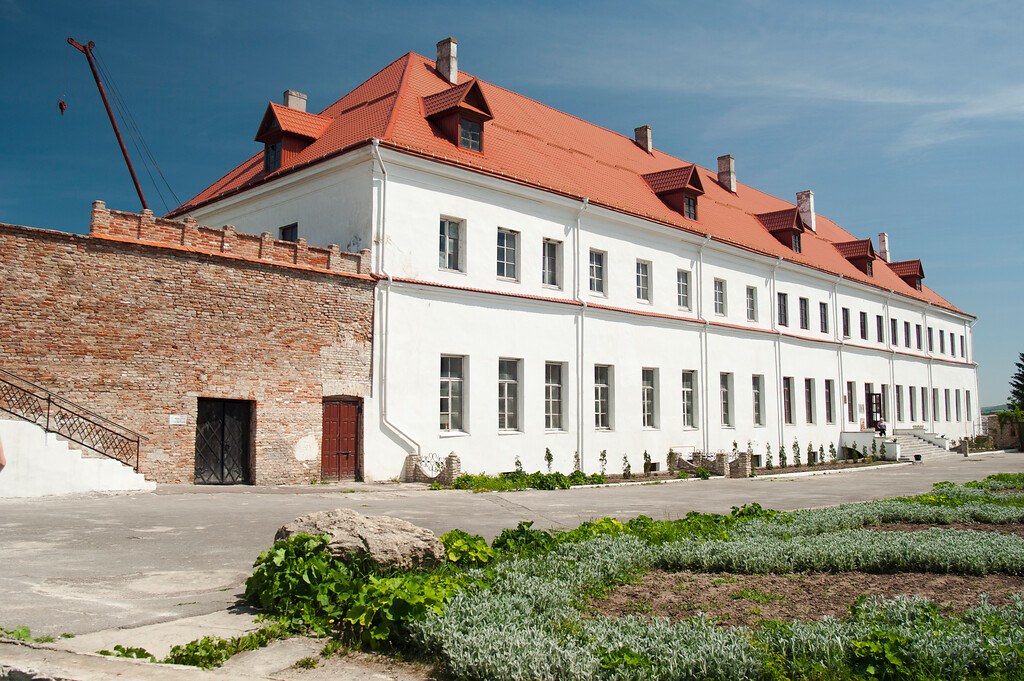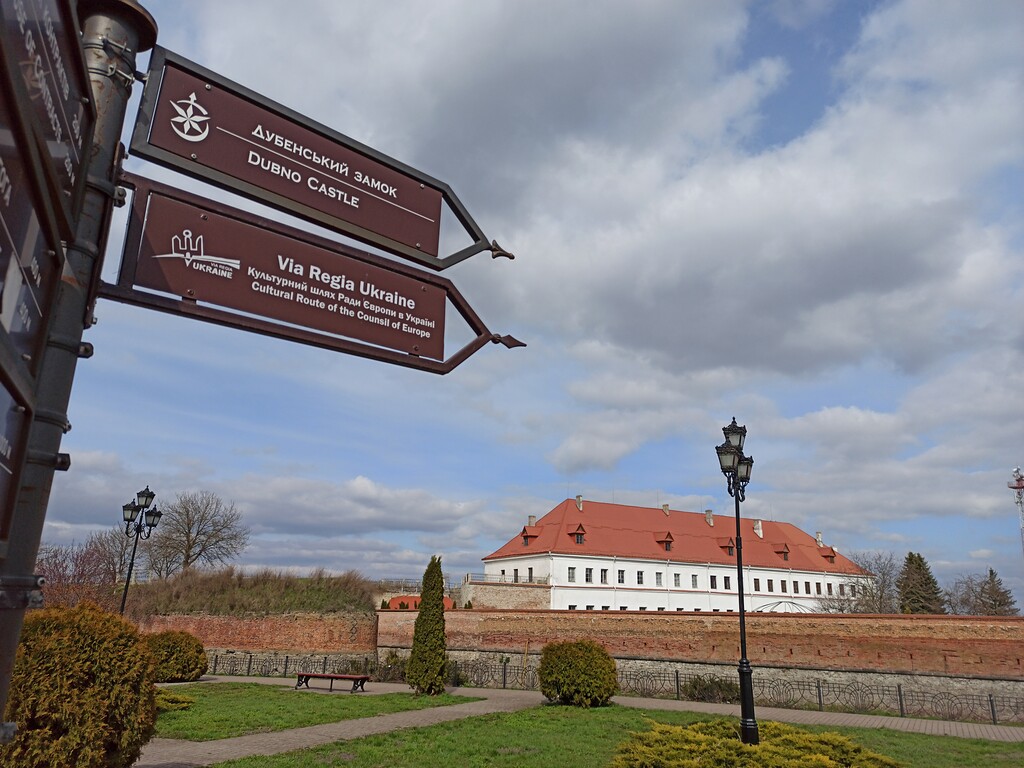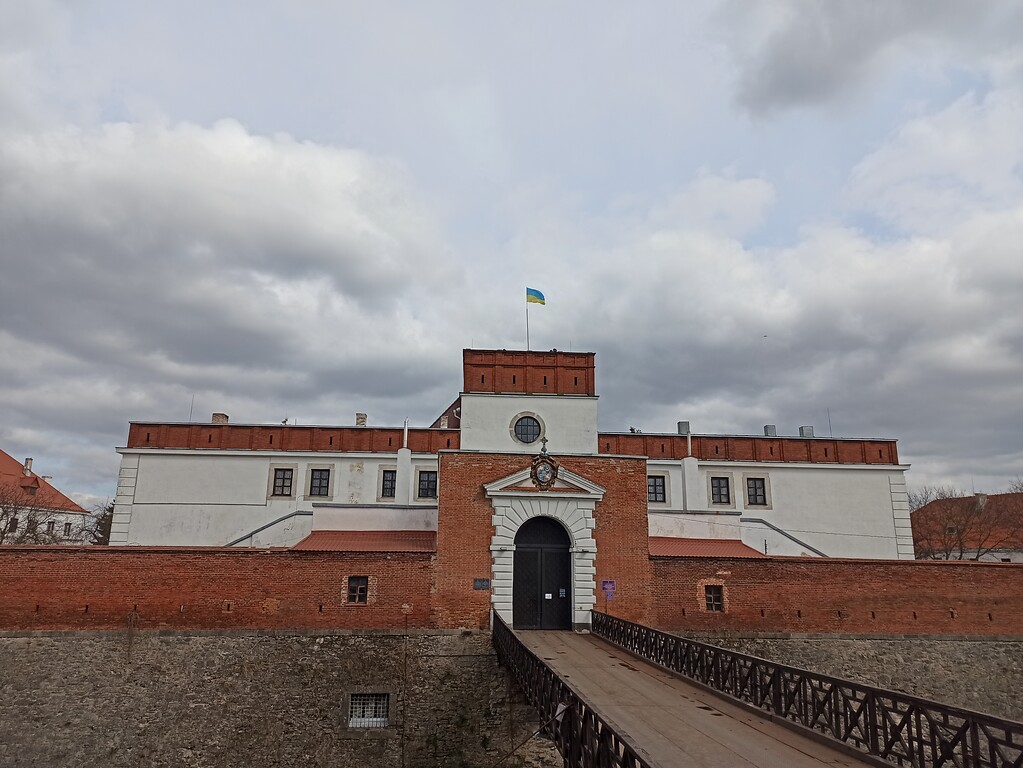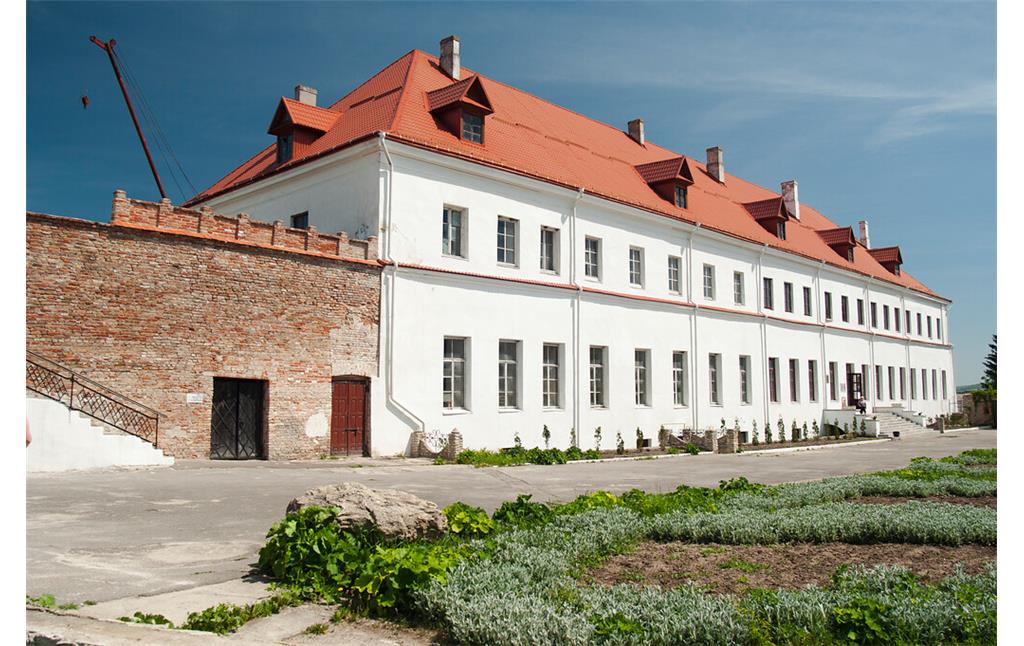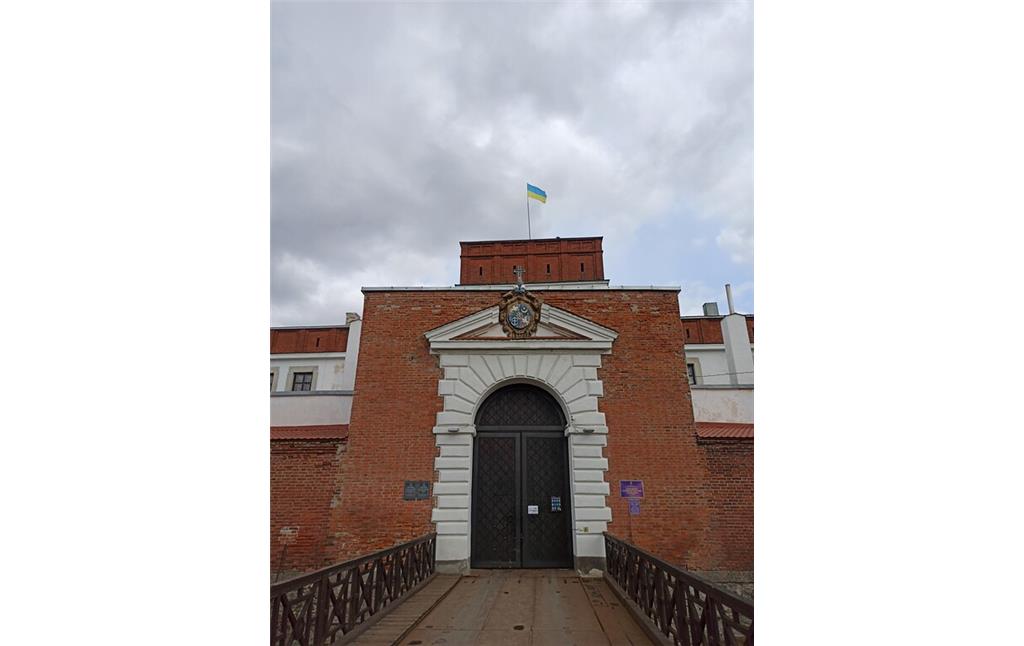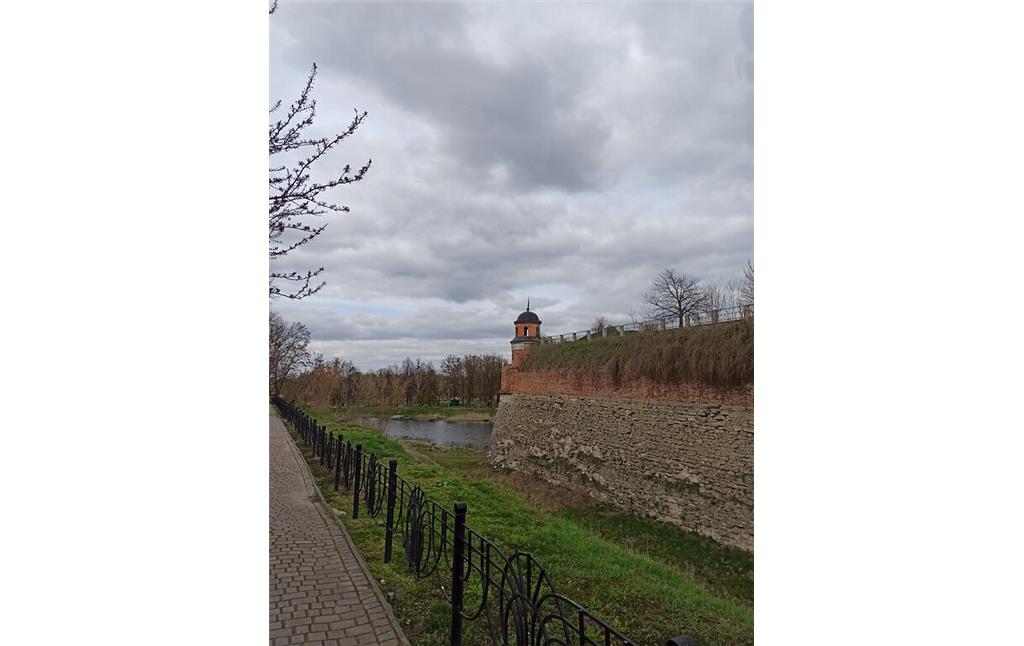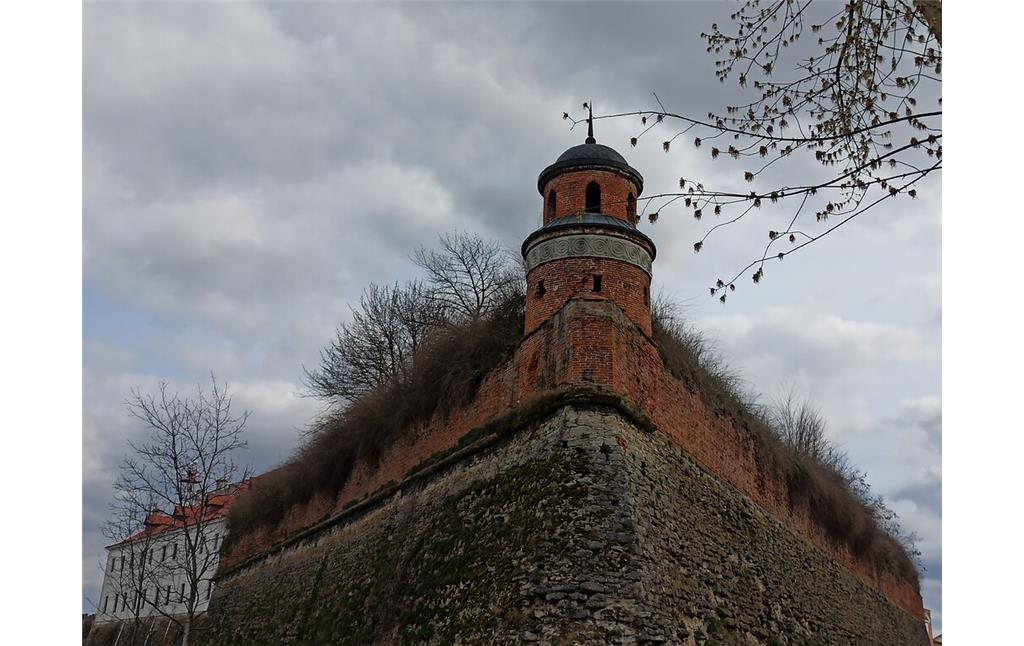
The history of Dubno Castle begins in the 10th century, when there was a fortress that was destroyed by Mongols from 1240 to 1241. Today’s Dubno Castle was founded in 1492 by Kostiantyn Ostrozkiy (1460–1530). His trophies won in numerous battles were kept in the castle. Most of them belonged to the Ostroh family. Special chests were made for money and jewelry, which over time were replenished with precious gifts from guests arriving at the castle. It is known that in 1616 a register of treasures of the castle of the Ostroh princes was compiled. This detailed list includes horse harnesses, weapons decorated with precious stones, gold and silver utensils. And also beautiful expensive fabrics and jewelry like tiaras and rings with rubies and diamonds as well as necklaces. There were a total of 49 chests of gold.
Ostrozkiy had some troubles with keeping the castle protected because its total area was quite small and it was only made of wooden walls and the small height of the building. In the following decades the inside of the buildings were decorated and the wooden walls were replaced by stoned ones.
Usually it was passed after a marriage from one generation to another. Over the centuries, the castle was owned and protected by other families: Zaslavski, Sangushi, Lyubomirsky or Konyezpolski.
An important part of the castle ensemble is the gatehouse of the 15thcentury. There is an entrance gate in the three-storey gate building. The gate tower originally had a domed roof. To this day, only two bastions of the castle remain of the four built.
In the 17thcentury Yanush Ostrozkiy (1554–1620) added the details of renaissance to the fortress. Since then, it looks more like a castle. In the same period of time, two watchtowers were built. One of them is still in a good state and open for visitors. To make it more secure, a deep ditch was made between Dubno town and the castle. It had few uses: protection and transportation. In case of protection, it could be filled with water from river Ikva, so soldiers couldn’t walk straight to the walls of the castle. The second function was about transportation: there were two entrances to kazamaty (a separate inner room in a fortress, which is protected from artillery fire and is used for storing supplies), where a whole carriage could pass.
Yanush Ostrozkiy became famous as carefree, greedy for other people's money. He later presented the city of Dubno and the castle to Stanislav Lyubomirsky (1583–1649).
All the walls in the castle have holes, specially made for soldiers to protect it safely. They could easily shoot from there in any direction, because of a special structure of the hole.
There are a lot of hidden tunnels under the castle as well. They were used for the safety of the royal family and residents of the town when the castle was attacked. There they could store supplies and values. The benefit is that the temperature below the earth's surface is quite low, around +10°C. Foods could stay unspoiled way longer in summer. Also, for winter time, it was better and warmer than staying outside. Theoretically, the castle was connected to other residences of family Ostrozkiy – all around western Ukraine. So, in that way, the family could escape if the protection of the castle failed. The tunnels were wide enough for a carriage to pass.
The territory and inner infrastructure of the castle was quite developed as well. For example, in the 16th century, they had 73 cannonries, and they grew in numbers all the time thanks to their own foundry. The castle even saw the development of armors: from muskets and hooks to machine guns and pistols. In theory Dubno castle also had its stables and a whole church.
In the 18thcentury, the Lyubomirsky family established a new building, designed by an unknown architect. The building now consists of ballrooms, Museum of Numismatics with ancient coins, room of curved mirrors, hunting room, exhibition of knight's armor, weapons and archeological finds with mammoth tusks.
In the 19thcentury the castle wasn’t a private property anymore. It was used by Russian tsar Nikolai II (1868–1918), Austrian emperors, UNR (Ukrainian National Republic) Army, Red Army, and Soviet Army.
Legends of Dubno Castle
Dubno castle has quite a lot of legends and stories to tell, for example:
Legend of Taras Bulba
One legend is tightly connected to the poem of Mykola Gogol (1819-1898) –„Taras Bulba”. One of the main characters of the story, Pannochka, lives there. Bulba’s son Andriy fell in love with her. When Cossacks were besieging Dubno and the castle for a week already, it started running out of provision. At night one of the maidens comes to Andriy and tells him that Pannochka is starving to death inside the castle walls. He immediately took a bag of bread and went straight ahead to the castle through underground tunnels. He saves his beloved one, but betrays Kozaks and his father. It’s said that the souls of these lovers still wander in the castle.
Legend about the brave maiden
Chests of jewels and money attracted a lot of interest to the castle, but the most valuable was it`s princess Katheryna (1602-1642), a wealthy woman and the daughter of Kostiantyn Ostrozkiy . In 1577 she was the main aim of the Mongols who attacked the castle. She was getting ready for her marriage, when uninvited guests in armor came to the fortress. Beata came to the watchtower and shot the cannon. The cannonball fell into the tent of the Crimean khan. Then his own son died. The troops retreated, leaving without a leader. They called Beata a witch. Since then the tower from which the shot was fired, was called Beata, or Maiden's Tower (Ukrainian: Divocha Vezha).
Interesting facts about Dubno Castle
- Dubno Castle is in the list of “The seven wonders of Ukraine”.
- It was never taken down after its errection in 1492.
- The poem „Taras Bulba” by Mykola Gogol (1809 – 1852) took place here.
- It has unique fortress structure.
- It has an original museum with exhibits from ancient times to nowadays.
- It is one of the few Ukrainian castles that has an option of virtual tours on Google maps.
Dubno Castle today
An easy way to get here is from Lviv. There are trains and buses daily. The castle is in the city center.
Internet sources
www.vsviti.com.ua: Dubno Castle: an impregnable legendary fortress of treasures of the Ostroh princes
www.zamokdubno.ua: Dubno Castle
(Oleksandra Momotiuk, Lviv Polytechnic National University, 2022. This object was created during the Russo-Ukrainian War in April/May 2022)
